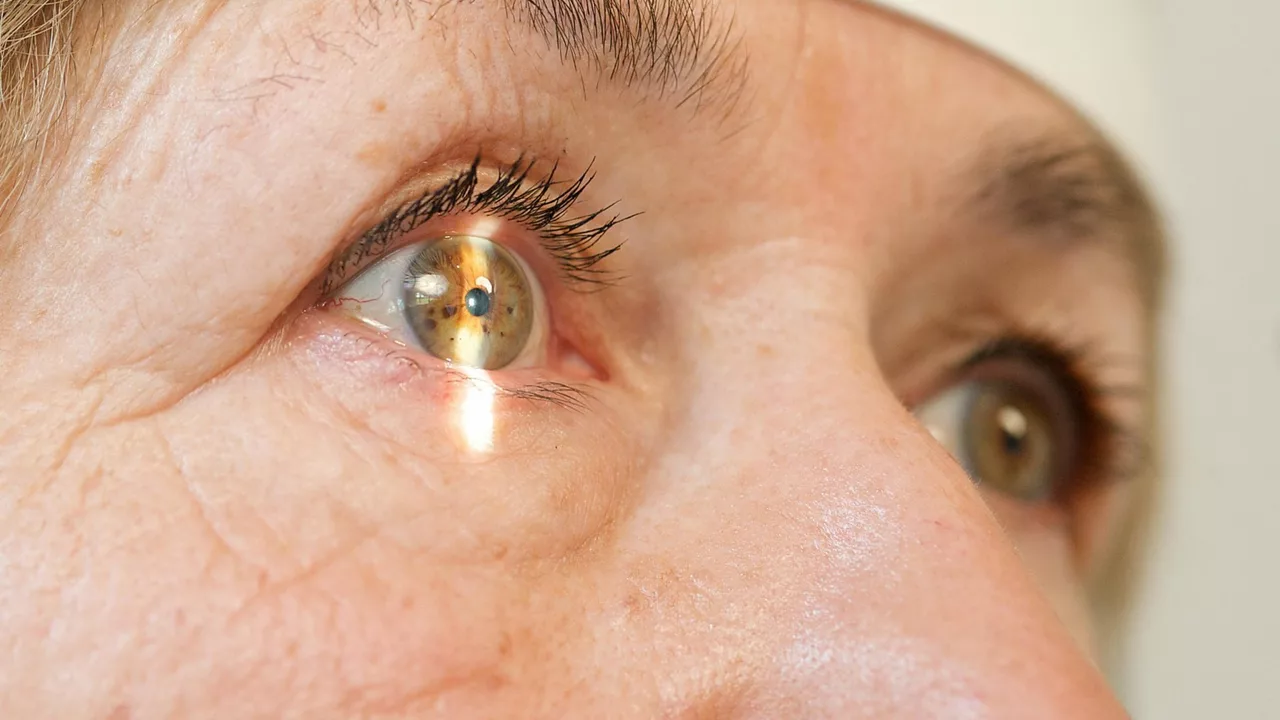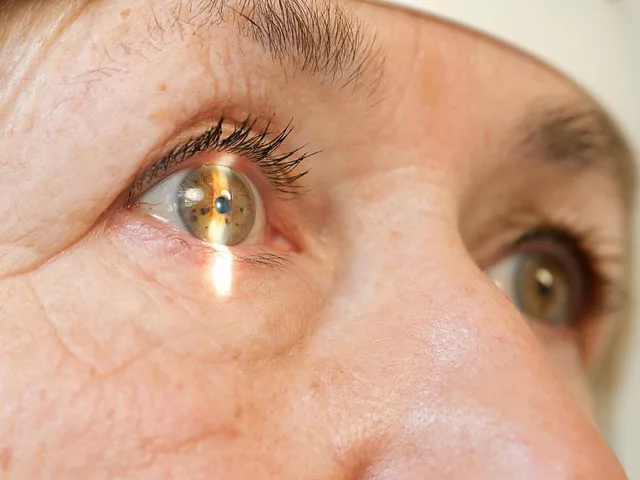Understanding Besifloxacin: The Basics
Before diving into the science behind besifloxacin, it's essential to understand what it is and why it's used. Besifloxacin is an antibiotic, specifically a fluoroquinolone, that's designed to treat bacterial infections. In this case, it's used to treat eye infections, such as bacterial conjunctivitis (also known as pink eye). This type of infection is caused by bacteria and can lead to redness, itching, and discharge from the affected eye. Besifloxacin works by killing the bacteria responsible for the infection, ultimately helping to relieve symptoms and promote healing.
Now that we have a basic understanding of what besifloxacin is and how it's used, let's delve into the science behind this antibiotic and explore how it works to effectively treat eye infections.
How Besifloxacin Targets Bacterial Cells
As previously mentioned, besifloxacin is a fluoroquinolone antibiotic. This class of antibiotics works by targeting the DNA replication process of bacterial cells. Specifically, they inhibit two essential enzymes: DNA gyrase and topoisomerase IV. Both of these enzymes play a crucial role in the bacterial DNA replication process, as they help to untangle and unwind the DNA strands so that they can be copied.
When besifloxacin inhibits these enzymes, it prevents the bacterial DNA from unwinding and replicating. As a result, the bacteria are unable to reproduce and eventually die off. This is particularly important for treating bacterial eye infections, as it helps to slow down the spread of the infection and reduce the severity of symptoms.
Enhanced Penetration for Effective Treatment
One of the key factors that make besifloxacin an effective treatment for eye infections is its ability to penetrate the eye tissues effectively. Due to its unique chemical structure, besifloxacin can easily pass through the cornea, reaching the conjunctiva and aqueous humor – areas where bacteria often reside during an infection. This enhanced penetration ensures that the antibiotic can reach the site of infection and start working to eliminate the bacteria causing the problem.
Additionally, besifloxacin has a low systemic absorption rate, meaning that it's less likely to cause side effects or interact with other medications. This makes it a safe and effective option for treating bacterial eye infections in a wide range of patients.
Reduced Risk of Bacterial Resistance
A common concern with many antibiotics is the potential for bacteria to develop resistance, rendering the medication ineffective. However, besifloxacin has a low risk of developing bacterial resistance due to its dual-targeting mechanism. As mentioned earlier, besifloxacin inhibits both DNA gyrase and topoisomerase IV enzymes, making it more challenging for bacteria to develop resistance compared to other antibiotics that only target one enzyme.
Furthermore, besifloxacin has been found to be less likely to promote cross-resistance with other fluoroquinolones, meaning that if bacteria develop resistance to one fluoroquinolone, they are less likely to be resistant to besifloxacin. This is a significant advantage, as it means that besifloxacin remains an effective treatment option even when other antibiotics may have become ineffective due to bacterial resistance.
Appropriate Use and Safety Considerations
While besifloxacin is an effective and safe treatment for bacterial eye infections, it's essential to use it appropriately to ensure the best possible outcomes. Besifloxacin is typically prescribed as an eye drop, and patients should follow their healthcare provider's instructions for use closely. This includes proper dosage, duration of treatment, and precautions to avoid contaminating the eye drop bottle.
As with any medication, there is a risk of side effects with besifloxacin, although these are generally mild and well-tolerated. Common side effects include temporary eye irritation, redness, or blurred vision. If you experience any severe or persistent side effects while using besifloxacin, it's essential to discuss them with your healthcare provider, as they may need to adjust your treatment plan.
In conclusion, besifloxacin is a powerful antibiotic designed specifically to treat bacterial eye infections. Its unique dual-targeting mechanism, enhanced penetration, and low risk of bacterial resistance make it an effective and safe treatment option for patients with bacterial conjunctivitis. By understanding the science behind how besifloxacin works, we can appreciate its role in helping to eliminate eye infections and promote healing.












Nancy Lee Bush June 19, 2023
Wow!!! The way Besifloxacin hits both DNA gyrase and topoisomerase IV is just mind‑blowing!!! 😄 Its dual‑target approach not only halts bacterial replication but also slashes the chance of resistance, which is a huge win for eye‑care professionals! 🙌
Dan Worona June 19, 2023
It’s funny how the pharma giants love to keep these slick eye drops under wraps, claiming they’re “miracle cures” while the real story is that they’re secretly testing nano‑particles for future mind‑control applications-just another hidden agenda in the medical industry, they say.
Chuck Bradshaw June 19, 2023
Besifloxacin belongs to the fourth‑generation fluoroquinolones, a class that was originally developed to overcome resistance mechanisms seen with earlier quinolones.
Its chemical scaffold includes a cyclopropyl substituent at the N‑1 position, which enhances binding affinity to both DNA gyrase and topoisomerase IV.
The dual inhibition is achieved by stabilizing the cleavage complex formed during DNA replication, thereby preventing religation of DNA strands.
In ocular pharmacokinetics, the drug’s lipophilicity facilitates rapid corneal penetration, reaching therapeutic concentrations in the aqueous humor within minutes.
Unlike systemic fluoroquinolones, Besifloxacin exhibits negligible plasma absorption because of its high molecular weight and low aqueous solubility.
This property reduces the risk of systemic adverse events such as tendon rupture or QT prolongation, which are concerns with oral agents.
The formulation as an ophthalmic suspension contains a benzalkonium chloride preservative that further destabilizes bacterial membranes.
In vitro studies have demonstrated minimum inhibitory concentrations (MICs) against common conjunctival pathogens-Staphylococcus aureus, Streptococcus pneumoniae, and Haemophilus influenzae-well below the clinically achievable ocular levels.
The low propensity for resistance development is also attributed to the fact that mutations conferring resistance to gyrase often compromise topoisomerase IV binding, and vice versa.
Consequently, the mutant prevention concentration (MPC) for Besifloxacin is notably higher than that of older fluoroquinolones.
Clinical trials have reported cure rates exceeding 90 % after a five‑day regimen, with side‑effects limited to transient hyperemia and mild discomfort.
The drug’s safety profile has been corroborated by post‑marketing surveillance data, which show no significant increase in ocular toxicity.
When prescribing Besifloxacin, clinicians should still advise patients on proper drop instillation technique to avoid contamination of the bottle tip.
Additionally, co‑administration with other topical agents may require spacing of at least five minutes to prevent dilution effects.
From a microbiological standpoint, the drug’s efficacy is reinforced by its ability to maintain bactericidal activity at pH levels typical of the tear film.
In summary, Besifloxacin’s molecular design, pharmacokinetic behavior, and dual‑target mechanism collectively account for its superior performance in treating bacterial conjunctivitis.
Howard Mcintosh June 19, 2023
Yo folks, this eye drop is definetly a game changer-my buddy tried it and was back to seein’ clear in like a day!!
Jeremy Laporte June 20, 2023
Totally agree, Howard! It’s awesome how fast it works, and the fact that it’s low on side effects makes it a solid pick for anyone-especially for the little ones.
Andy Lombardozzi June 20, 2023
Besifloxacin’s rapid corneal penetration is a direct result of its optimized lipophilic balance, which ensures high bioavailability at the infection site while minimizing systemic exposure.
Joshua Ardoin June 20, 2023
🔥 Absolutely, Andy! This drug is like a ninja‑stealthy assassin for bacteria, slipping right into the eye and wiping out the bad guys with style 😎💊.
Glenn Gould June 20, 2023
It's a solid option for pink eye.
Poonam Sharma June 20, 2023
आओ, हमारे देश की वैज्ञानिक शक्ति को याद करो! बेज़िफ्लॉक्सासिन, एक सच्चा शिल्प है जिस पर हमारे भारतीय शोधकर्ताओं ने अपनी रक्त‑रंजित मेहनत डाल दी है-यह न केवल बायोफिल्म‑भंगकारी गुणों से लैस है, बल्कि इसकी परत‑परत विद्रोही एंटी‑रिजिस्टेंस मैकेनिज़्म हमारे राष्ट्र के लिए एक गर्व का प्रतीक है, जो वैश्विक फार्मा दिग्गजों को मात देता है! इस अनूठी फार्मकोड्योर को अपनाओ, नहीं तो आँखों में आँसू भी हमारी अद्वितीयता को नहीं देख पाएँगे।
Meigan Chiu June 20, 2023
The patriotic flair is noted. However, the scientific claims need rigorous citation; the assertion that Besifloxacin is uniquely “Indian‑crafted” overlooks its development by multinational collaborations, and the dramatic language, albeit vivid, does not substitute for peer‑reviewed evidence.